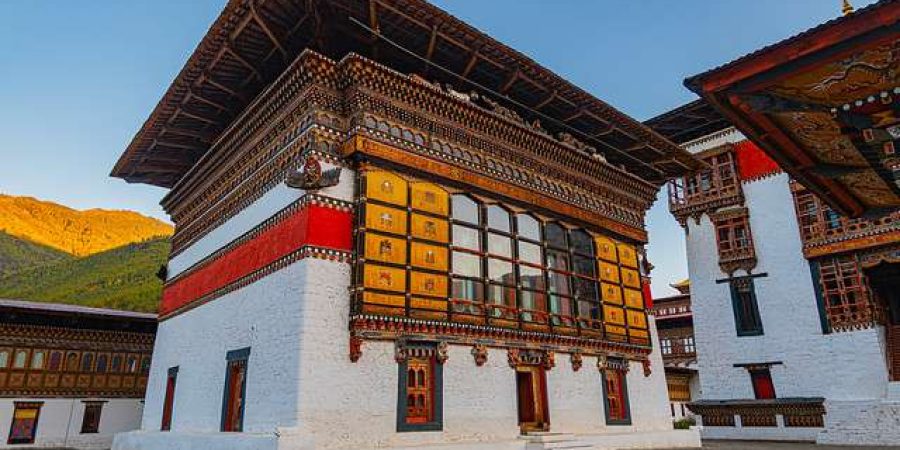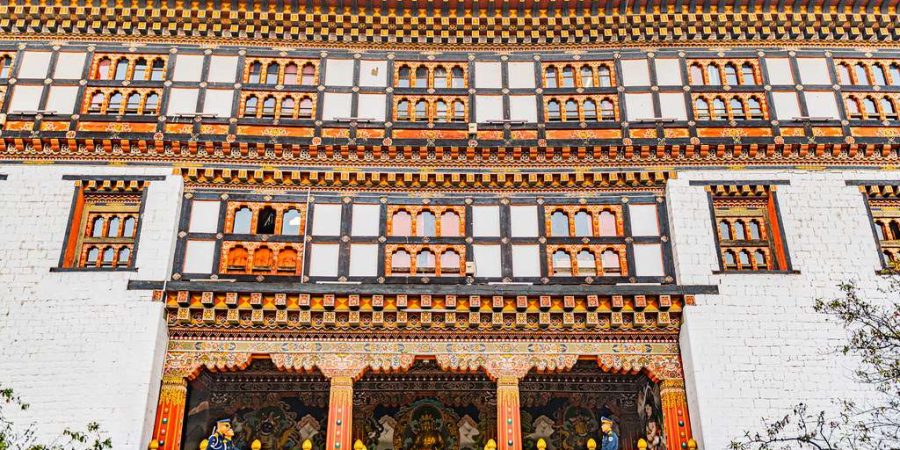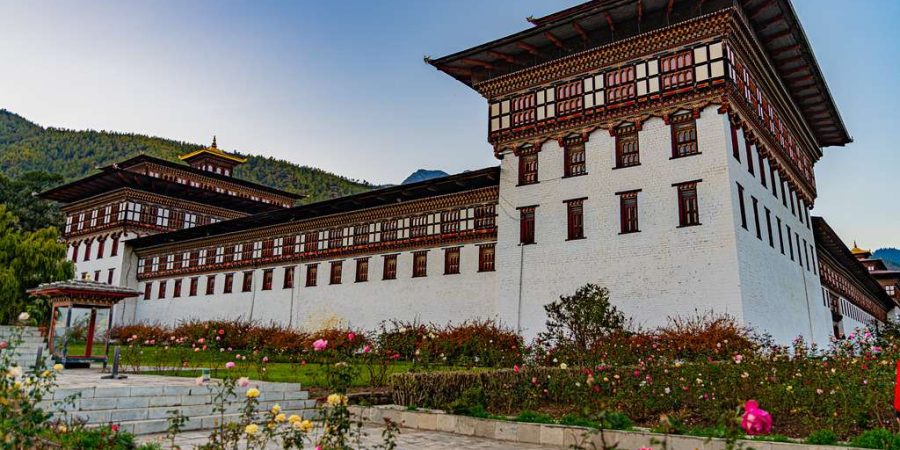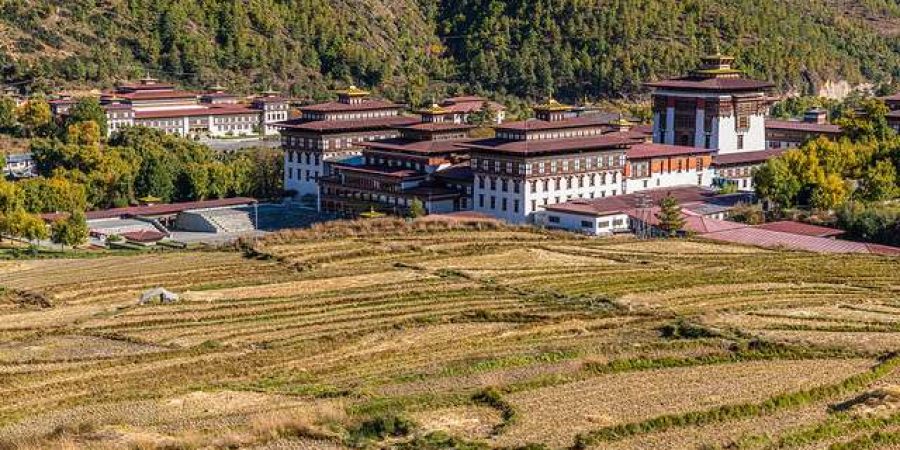Thimphu Tashichhoedzong, also known as the “Fortress of the Glorious Religion,” is one of the most iconic and historically significant landmarks in Bhutan. Situated on the western bank of the Wang Chhu River, it serves as the seat of the Bhutanese government, the office of the King, and the summer residence of the central monastic body led by the Je Khenpo (chief abbot of Bhutan).
Originally constructed in 1216 by Lama Gyalwa Lhanapa, the dzong underwent numerous reconstructions and expansions, particularly under the rule of the third Druk Desi, Chogyal Minjur Tenpa, in 1641 and later in 1962 when King Jigme Dorji Wangchuck restored it to its present glory. The architecture of Tashichhoedzong is a brilliant example of traditional Bhutanese design, featuring massive, whitewashed walls, intricately decorated wooden windows, and a golden-topped central tower, or utse.
The dzong hosts several important annual events, including the Thimphu Tsechu, a grand religious festival held every autumn that attracts both locals and tourists. During this festival, masked dances, religious rituals, and vibrant cultural performances take place, offering a profound insight into Bhutanese spirituality and traditions.
Visitors to Tashichhoedzong can explore its serene courtyards, temples, and assembly halls, all adorned with exquisite paintings and carvings that depict Buddhist lore and Bhutanese mythology. The dzong not only stands as a symbol of Bhutan’s rich cultural heritage but also as a testament to its continued importance in the country’s spiritual and political life.




